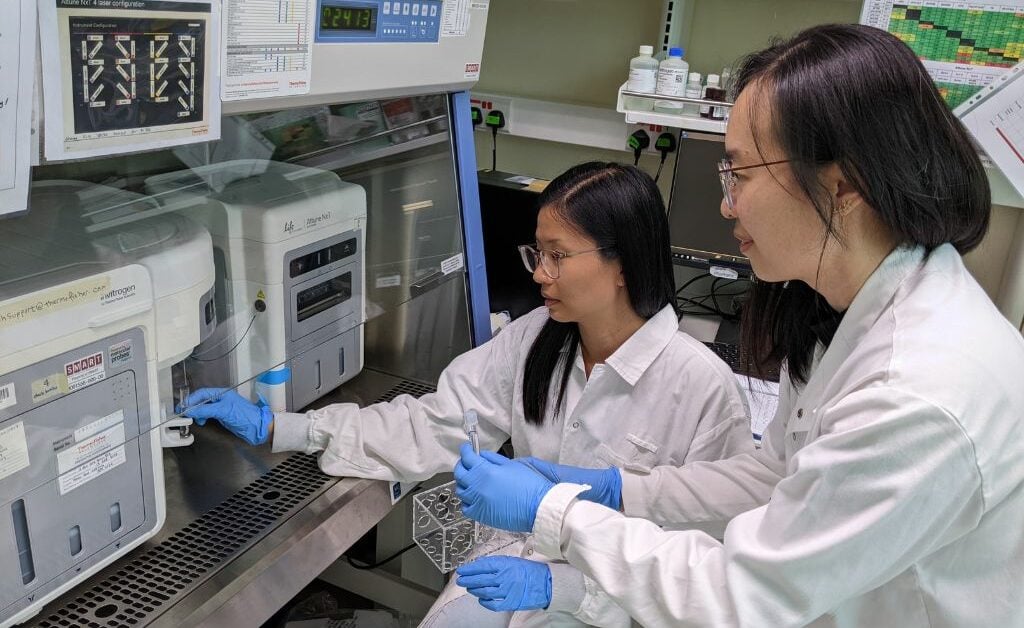Newsletter Signup - Under Article / In Page
"*" indicates required fields
A new stress signaling system enables bacteria cells to adapt and protect themselves against the immune system and certain antibiotics.
The discovery was made by researchers from the Antimicrobial Resistance (AMR) Interdisciplinary Research Group (IRG) at Singapore-MIT Alliance for Research and Technology (SMART), MIT’s research enterprise in Singapore, in collaboration with Singapore Centre for Environmental Life Sciences Engineering (SCELSE), Nanyang Technological University Singapore (NTU Singapore) and Massachusetts Institute of Technology (MIT).
An enzyme, RlmN, was observed to directly sense chemical and environmental stresses, and rapidly signal for the production of other proteins that allow the bacterium cell to adapt and survive. This breakthrough discovery of RlmN as a stress sensor has revealed a new mechanism of antimicrobial resistance that can be targeted for drug development.
All living cells have sensors that detect environmental changes – such as reactive oxygen species (ROS) or free radicals – caused by cell stress or metabolism. According to the well-known central dogma of molecular biology, this is achieved using a two-step system comprising transcription and translation. This means that genes are transcribed into messenger RNAs (mRNA), which are subsequently translated on ribosomes by transfer RNAs (tRNAs) to produce proteins – the functional building blocks of cells.
SMART AMR’s discovery of the RlmN system illustrates that cells possess a much quicker mechanism for cell responses. This shortcut is the first example of a direct connection between a sensor system and translation machinery to generate proteins to combat ROS.
In a paper, “An RNA modification enzyme directly senses reactive oxygen species for translational regulation in Enterococcus faecalis,” published in the scientific journal Nature Communications, the researchers document their discovery of RlmN as a stress sensor for ROS in Enterococcus faecalis. E. faecalis is a common bacterium found in the human gut that can cause a variety of infections, with catheter-associated urinary tract infections being the most prevalent.
They found that when RlmN is suppressed upon contact with ROS, it leads to the selective production of resistance proteins and other pathways associated with antimicrobial resistance known to occur during bacterial responses to stress. RlmN inhibition represents a signaling mechanism for bacterial drug resistance and immune evasion, since ROS is induced by certain antibiotics and human immune cells.
The discovery was made using a mass spectrometry technology developed at SMART and MIT to simultaneously identify all 50 different ribonucleic acids (RNA) modifications in bacteria. This approach allowed them to observe changes in cell behavior or pattern mutations that cannot be detected when studied individually.
Inactivated by ROS
Using this tool, the researchers exposed E. faecalis cells to low, non-toxic doses of various antibiotics and toxic chemicals made by the immune system. They found that only one of the 50 modifications changed – a chemical called 2-methyladenosine (m2A) decreased. As this modification was known to be made by RlmN in other better-studied bacteria, SMART AMR researchers proved that this too, was the case in E. faecalis and went on to show how it is inactivated by ROS.
“This is the first time a direct connection has been found between ROS and RlmN, and it may be a step forward in developing new treatments for bacterial infections. By understanding how RlmN works and the different ways in which bacteria respond to stress, we could uncover other stress sensors that rely on similar mechanisms,” said Peter Dedon, co-lead principal investigator at SMART AMR, MIT professor, and co-corresponding author of the paper.
“Bacteria are incredibly adaptable and can evolve to resist drugs designed to kill them. This growing resistance is a silent pandemic that poses a global threat to public health as it reduces the efficacy of existing antibiotics and increases mortality rates from infections. Thus, understanding the mechanisms bacteria utilize to adapt against stressors helps researchers develop new and novel therapies to combat AMR. Moving forward, SMART AMR will work on gaining a comprehensive understanding of this new mechanism of stress response and possible drug resistance,” said Lee Wei Lin, principal research scientist at SMART AMR and first author of the paper.
As novel, high-impact solutions to combating AMR are a top priority to improve public health, understanding bacterial stress survival mechanisms is an important step forward for the scientific community.
The researchers said that by understanding these cell adaptation and survival mechanisms, it is possible to design drugs that prevent the adaptation response and ensure that the pathogens retain their sensitivity to antibiotics.
Partnering 2030: The Biotech Perspective 2023







